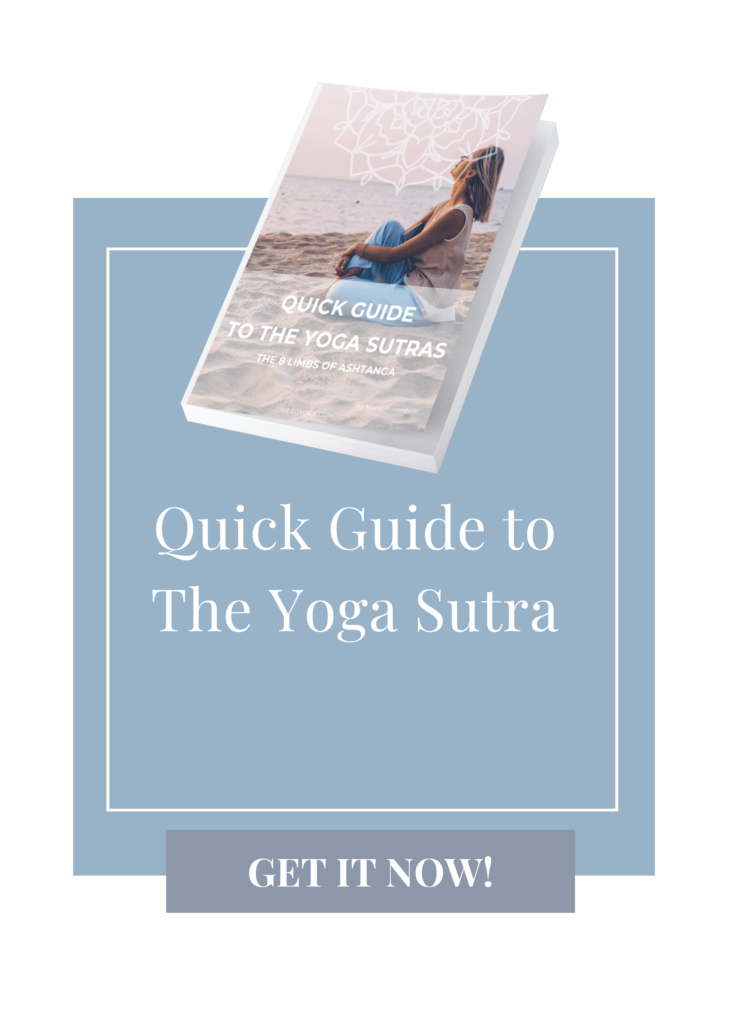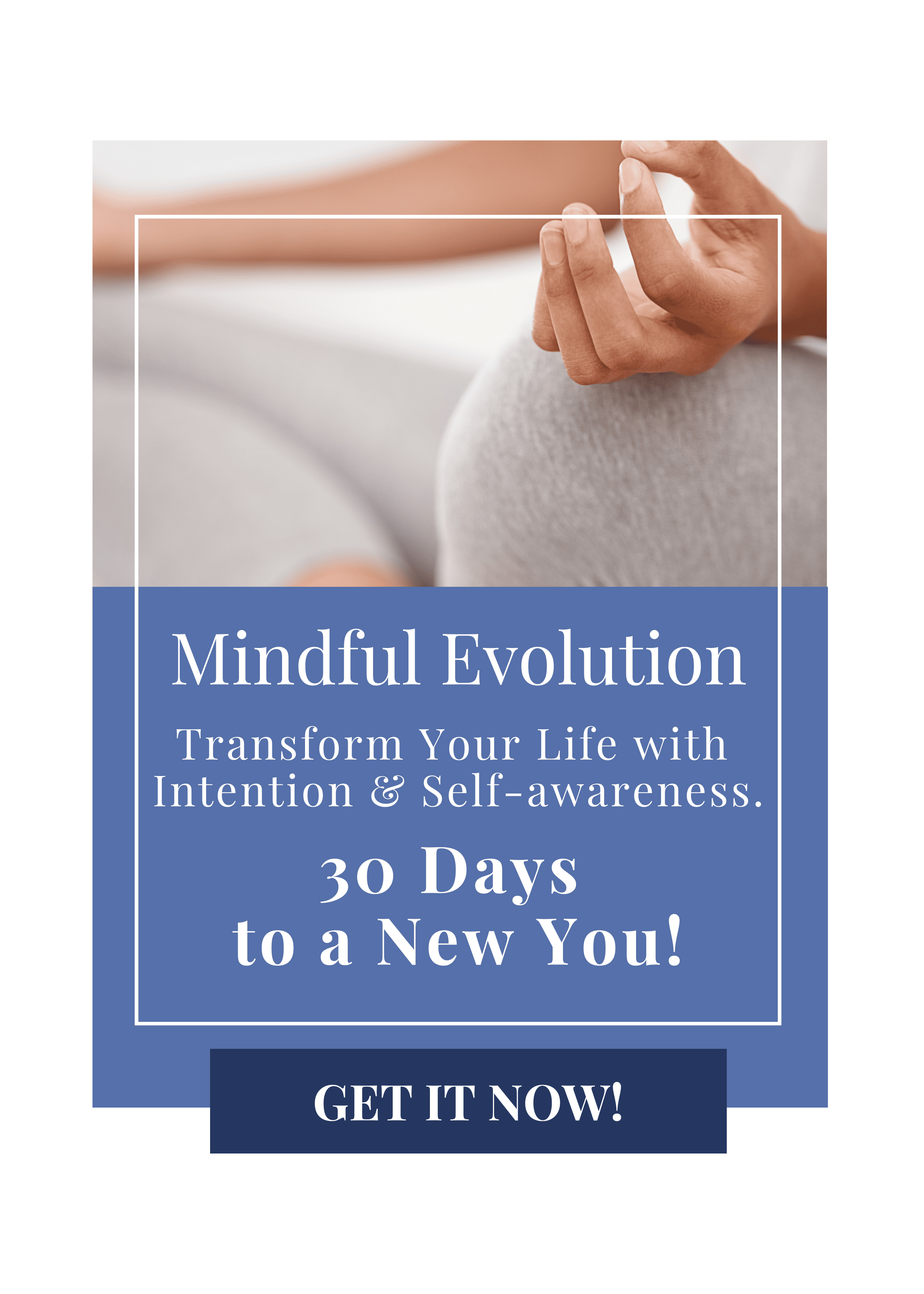The Yoga Sutras are not just another spiritual text. This is a text that is at the foundation of the practice of yoga, and instead of being exoteric and immaterial to modern-day life, it is very much relevant and valuable for anyone trying to live a balanced, harmonious, and healthy life.
Please don’t just take my word for it, but read on and prepare to have your perspective of what it means to live a healthy life challenged! I’ve done the hard work and condensed this deep knowledge into easy applicable tips and exercises for you.
First, let’s look at what the yoga Sutras are.
The Sutras are for everyone who wants to achieve a greater balance, calmness, satisfaction, and stability in their lives, it creates the fundamental base we all need to be able to cope with the many challenges that life throws at us.
But I’m not gonna lie, it is an old text, written in Sanskrit and in aphorisms, which can make it a bit of a challenging read for many (even though it has been translated into English). Now I’ve read and studied a range of the different versions of the English translations out there to get the full overview of what the Sutras are all about. To spare you the challenge of reading the Sutras yourself, I’ve created a series of articles that highlight the key points and concepts in the Sutras that very much still apply to living our modern-day lives.
If you already know about the Sutras and some of the different limbs of the Sutras, you can jump to the end of this article, for a linked overview of all the articles. If not, I highly recommend you read the articles one by one (I’ve tried to keep them short), to get a cohesive presentation of the Sutras and simple ways how to incorporate the concepts in modern-day life, that, hopefully, will give you a greater understanding and integration of what the Sutras is all about.
So, let’s dive in, and get the background for the Sutras and what the Sutras are!

“It was my idea, I stole it first!”
Let’s face it, it has all been said, written, and done before. The “It was my idea, I stole it first” statement tells us a little about how we as a people, believe that we are unique and although we have taken quantum steps in both personal and general development in society and the world, we are undeniably connected to our past. We borrow, transform, and build on existing knowledge and theories, and this is an absolutely necessary part of creating development.
Today, there are unimaginable amounts of self-development theories and self-help terminologies available to us, all fighting to be the right and the only way. (spoiler alert there is no one right way!). But they are often based on already existing writings and knowledge. This does not necessarily make them worse, but it also means that there are basic original concepts/texts on which they are based.
The Yoga Sutras is one of these texts. Written at a time when the sharing of knowledge was moving from the oral tradition to the written, and by virtue of this, suddenly became available to all of us and not just the initiated few.
Patanjali and the Yoga Sutras.
Sage and Yogi Patanjali compiled the Yoga Sutras, an ancient Indian text which he originally named “On Traditional Yoga” and which subsequently became known as the “Yoga Sutras” of Patanjali. Patanjali described it as the eightfold path and called it Astanga (which literally means ashta =“eight”, anga =”limbs” ).
The text was based, among other things, on old Indian scriptures such as Verdas, and by systematizing these, he converted them into the more accessible aphorisms (concise expressions of a thought) in the Yoga Sutras.
The Yoga Sutras consists of 195 aphorisms and was written in this way, as it was common at the time to learn by oral recitation, repetition, and memory. The aphorisms could thus be learned by heart and passed on orally from teacher to student, which was the way of teaching at the time. This format also means that every single word he wrote was important, every one of them is there for a reason, and vital for the Sutras to be a process for how we can release our suffering.
Overall, the Yoga Sutra is a text about how to remove the obstacles and blockages we experience in life, internally in our mind and body as well as externally in our interactions with the outside world, which prevent us from living life to the fullest. Rather than giving us the answers, the Yoga Sutra helps us ask the right questions about how we can behave in relation to ourselves and others, and what we really need to be us.
The Yoga Sutras are said to be for the brave, those who dare to confront themselves, work with themselves, and open up the personal development and corresponding elimination of old inappropriate habits, bodily blockages, perceptions, and ideas that work against us and prevent us from achieving our goals.
But the 8 limbs (parts) of yoga described in the Sutras are not only intended for people who feel the need for fundamental changes in their lives. They are for everyone who wants to achieve a greater balance, peace, satisfaction, and stability in their lives, and help create a solid base of knowledge and understanding that we all need to cope with life’s challenges.

The Sutras and Yoga.
What are the 8 limbs of Astanga yoga?
They say that in yoga there is no finish line we have to cross, practicing yoga is the goal in itself and the journey is in fact the purpose of yoga. In the Sutras, however, becoming enlightened is described as the goal. Here, “enlightened” is defined as a cessation of the fluctuations of the mind. An enlightened mind gives you a more constant sense of inner peace, stability, and calm, where nothing can disturb or have power over you, and you understand how the world is connected. You will therefore be both knowledgeable but at the same time also clarified and accepting about who you are as a person – and know what I can/can’t do and what I am/what I am not.
But being enlightened is in principle a “perk” that can arise from practicing yoga. When you start your yoga journey you will, at first sporadically perhaps, begin to experience moments of total inner balance, stability, and calmness, and as you continue, this feeling of contentment, calmness, and stability will arise more and more often, until you find that in challenging and stressful situations you can tap into your core of calm, and make better and more appropriate decisions in your life.
In the Sutras the 8 limbs are described as;
Yamas (5 rules) – the ethical rules for external relationships/restraints
Niyamas (5 rules) – the ethical rules for inner relationships/observances
Asana – physical exercises/yoga poses
Pranayama – breathing exercises/breath control
Pratyahara – withdrawal of the senses/sense control
Dharana – focused concentration
Dhyana – meditation
Samadhi – surrender/enlightened being
So 16 suggestions or rules for how to live a harmonious and healthy life!

Why is it called the 8 limbs of yoga?
An important point to notice here is that the 8 limbs are not intended as a linear path where we step out on a first step and begin our journey. The use of the word “limbs” around the individual parts is not accidental either. Like a fetus growing in its mother’s womb, where all the different parts of the body (limbs) develop simultaneously and continuously, we correspondingly develop the different parts of the 8 limbs in interaction with each other.
It is up to you where you want to start, depending on what you need to focus on right now and what you ultimately want to achieve. When you first get to know yoga, a good place to start is with the physical exercises of yoga (Asana), also called Hatha yoga. In connection with the physical practice of yoga, you work with all 8 parts of the Sutras.
The sutras are broadly divided into four chapters.
1. The first chapter defines the characteristics of practicing yoga itself. It discusses the challenges you may encounter on your way and what you can do about them.
2. The second chapter consists of 2 parts. It describes the first 5 limbs of yoga and describes a yoga practice that can help you make the changes needed to move from distraction to focused concentration. The first part deals with how to remove pain from our lives; if we find ourselves in the midst of total chaos in our lives, it is difficult to do anything.
The second part deals with how to achieve total freedom by following the 8 limbs.
3. From there onwards, the last 3 limbs are described; Dharana (focused concentration), Dhyana (meditation), and Samadhi (enlightened). Unlike the first 5 limbs, these last 3 limbs cannot be directly practiced. We cannot sit down to practice Samadhi for half an hour, but via the first 5 limbs, we get better and better at creating situations from which Dharana, Dhyana, and Samadhi arise.
How do you incorporate the 8 limbs of yoga?
As mentioned, in a series of articles I will introduce you to the 8 limbs of yoga. I hope you can use this as inspiration and guidance, and if it seems like too much to start with at once, pick and start with the areas (or limbs) that may already be partially integrated into your life, or could easily become so.
The physical yoga exercises are a good starting point, here you quietly become familiar with the different parts, which all appear to a greater or lesser extent, and you experience the effect on your own body; breathing exercises (Pranayama), focused attention (Dharana), yoga exercises (Asana) and meditation (Dhyana) have.
If you’re ready, let’s explore the lessons we can learn from this old text.
For each of the concepts, I’ve listed journal prompts + practical easy, and simple ways to incorporate them into your life to make it accessible and easy for you to incorporate them into your life.
So start your journey with the first step – Ahimsa!

Already familiar with the concepts, dive into whatever resonates with you right now:






